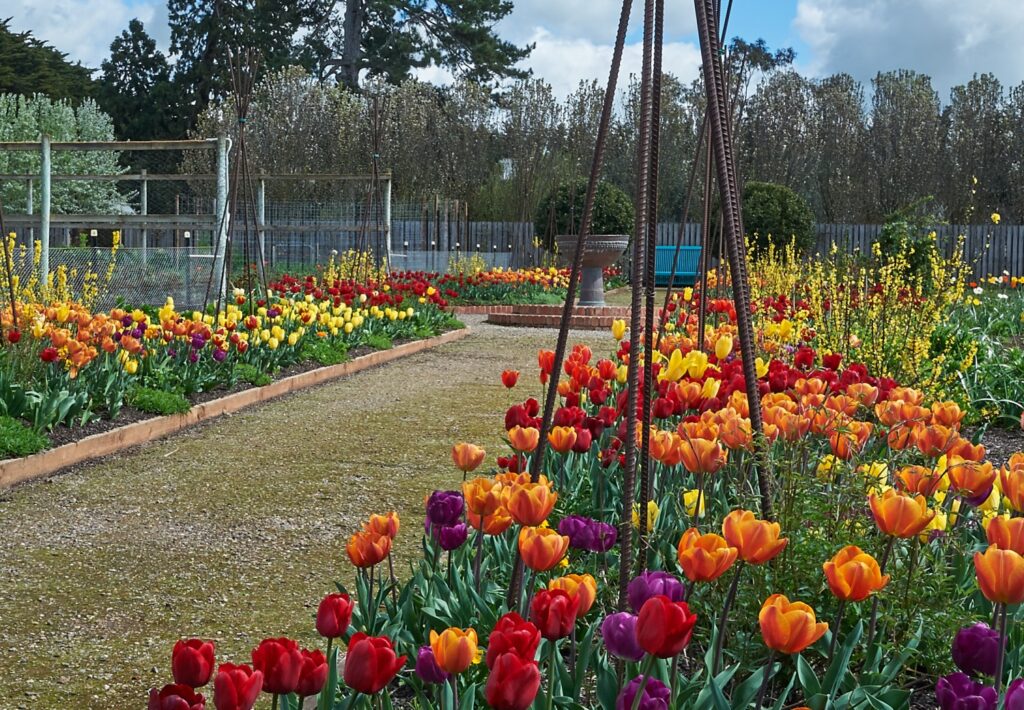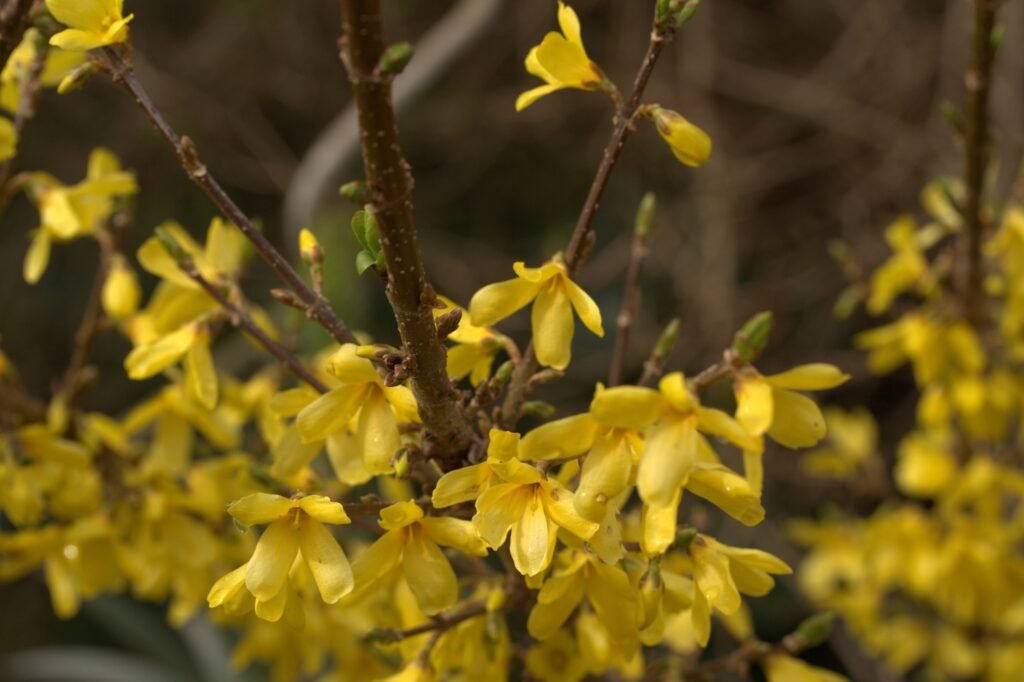Uncategorized
Forsythia ‘Gold Clusters’ (syn Forsythia ‘Melee d’Or’)
Seventy years ago, when I was 8 years old, my father let me use a small garden plot. The bed, a metre wide and 3 metres long, was set against a path and supported by a dry-stone retaining wall. I can’t now remember what I planted except for the five hardwood cuttings of Forsythia which I just stuck into the bed. Why Forsythias I can’t remember. All of the cuttings took.
Spring a year later they had grown to metre tall shrubs covered in stem clasping bright yellow bells. After another year though the Forsythias had smothered all of the other plants in the bed and had obviously grown far too big for their allotted space. My father took them out. So ended my first attempt at gardening.
When my wife Criss Canning and I bought our Ascot property thirty-five years ago we found a large unruly Forsythia growing in the garden. Whilst a bit scruffy for much of the year it provides long wands covered in flowers for the house at a time in early spring when there is little else to pick.
The older varieties of Forsythia, whilst terrific in large gardens, take up too much space to be practical in smaller gardens. A couple of decades ago I bought the French bred Forsythia ‘Gold Clusters’ (syn. ‘Melee d’Or’) from Don Teese whilst he was still running the retail side of Yamina Rare Plants. And what a wonderful plant it has proven to be. I planted a dozen at 5 metres or so spacing on both sides of a 50 metres long double border lining the main axis of the Lambley flower garden. In the twenty years they have been there ‘Gold Clusters’ has have grown no taller than 1.2 metres. After a few years, when they did get a little wide for their spot, it was an easy job to trim them back to the right width.
So many plants with flowers from deep lemon to dark yellow are described as being a gold colour. The flowers of ‘Gold Clusters’ are on the rich side of lemon.
‘Gold Clusters’ flowers at the same time as the tulips which we plant in quite large numbers each year. The combination of deep lemon Forsythia with bright red or yellow or purple tulips is a joy every spring. This year we’ve planted white Iceland poppies and lemon and yellow tulips in the same beds as the Forsythia. It should be a lovely, bright start to spring.

